Wood shavings, also known as wood chips or shavings, are a vital by-product of the wood processing industry, widely used in various applications such as animal bedding, wood pellet production, biomass fuel, and industries like paper and engineered wood manufacturing. With the growing global demand, producing wood shavings that meet international standards requires a combination of advanced technology, stringent quality control, and a commitment to sustainable practices. This process not only focuses on delivering high-quality products but also ensures responsible resource use, minimizing environmental impact and meeting the rigorous requirements of markets such as the EU, Japan, and South Korea.

In this article, we will delve into the detailed steps of producing wood shavings to international standards, from raw material selection to export, emphasizing the meticulousness and innovation at each stage, and concluding with a connection to the AGROVIET Company Limited brand.
1. Raw Material Selection and Preparation
The quality of wood shavings is heavily dependent on the raw material used, making the selection of high-quality wood the first and most critical step in the production process. Leading manufacturers, particularly those targeting international markets, prioritize wood from certified sources such as the Forest Stewardship Council (FSC) or the Programme for the Endorsement of Forest Certification (PEFC), ensuring legal and sustainable harvesting. Commonly used wood types include pine, eucalyptus, acacia, or mixed wood sourced from wood processing plants or certified plantation forests. Pine wood is often preferred for applications like animal bedding due to its superior moisture absorption and natural aromatic properties, while mixed woods like acacia or rubber are suitable for producing pellets or biomass fuel.
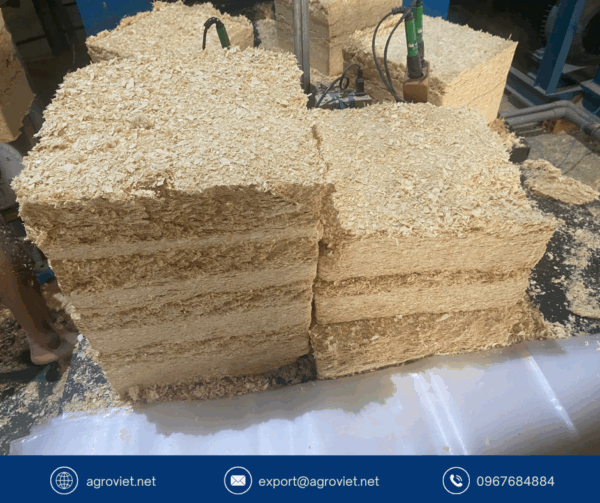
The wood collection process begins with gathering by-products such as branches, wood scraps, or offcuts from furniture manufacturing, construction, or other wood-based industries. These materials are transported to the factory using specialized trucks designed to prevent contamination from external elements like soil, water, or other impurities. At the facility, the wood undergoes rigorous inspection using advanced scanning machines to remove contaminants such as bark, leaves, stones, or metal, ensuring the raw material is clean and ready for further processing. After inspection, the wood is sorted based on type, size, and moisture content, with the goal of maintaining moisture levels below 15% to suit subsequent processing stages.
Wood with high moisture content may be stored in dry warehouses or pre-treated with drying equipment to achieve optimal conditions. Storage facilities are equipped with ventilation systems and moisture-monitoring sensors to prevent rot or degradation, ensuring the raw material remains in prime condition before production begins. This process not only guarantees the quality of the raw material but also reflects a commitment to responsible resource use, minimizing waste and protecting natural forest ecosystems.
2. Wood Chipping, Shaving, and Processing
Once the raw material is prepared, the production of wood shavings begins with chipping the wood into smaller pieces, typically ranging from 10-50 mm in size, depending on the intended end-use. High-capacity drum or disc chippers are employed, equipped with sharp, adjustable blades to ensure uniform chip sizes. This chipping stage requires close monitoring to prevent producing pieces that are too large or too small, as this could affect the quality of the final wood shavings. The chipped wood is then transferred to specialized shaving machines to produce wood shavings with a thickness of 0.5-2 mm and lengths ranging from 2-15 mm, tailored to applications such as animal bedding or pellet production.
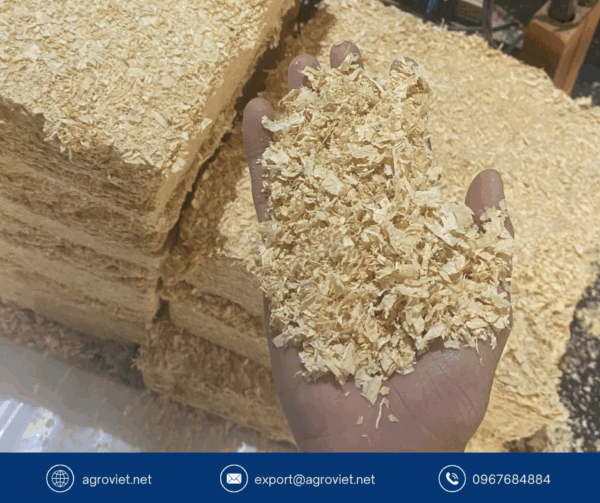
Modern shaving machines allow precise adjustments to thickness and length, ensuring the product meets international standards like ENplus or specific customer requirements. During the chipping and shaving processes, wood dust and impurities are a significant concern that must be carefully managed to ensure worker safety and environmental protection. Factories employ industrial dust extraction and air filtration systems to minimize dust emissions, maintaining a clean product with a maximum of 0.5% foreign matter. Non-compliant wood pieces are filtered through vibrating sieves and recycled for other purposes, such as biomass fuel or organic fertilizer production, demonstrating efficient resource utilization.
Depending on the application, some wood shavings may undergo chemical treatment to enhance resistance to termites, fire, or to improve durability. The chemicals used comply with strict international safety standards, such as REACH (EU) or EPA (USA), particularly for sensitive applications like animal bedding. The chemical treatment process is conducted using automated spraying or soaking systems, ensuring even distribution without compromising the wood’s natural properties, such as the aromatic scent of pine or its moisture-absorbing capabilities.
3. Drying, Quality Control, and Packaging of Wood Shavings
Moisture content is a critical factor affecting the storage and performance of wood shavings, especially for export to markets with stringent requirements like the EU, Japan, or South Korea. International standards typically require wood shavings to have a moisture content of 8-15%, often capped at 12%, to prevent mold growth and ensure durability and suitability for applications like animal bedding or pellet production. The drying process is carried out in advanced industrial dryers using steam, hot air, or a combination of solar energy for optimal efficiency. Drying temperatures are carefully controlled between 60-80°C to preserve the wood’s natural structure, avoiding damage to properties like elasticity or the natural aroma of pine.
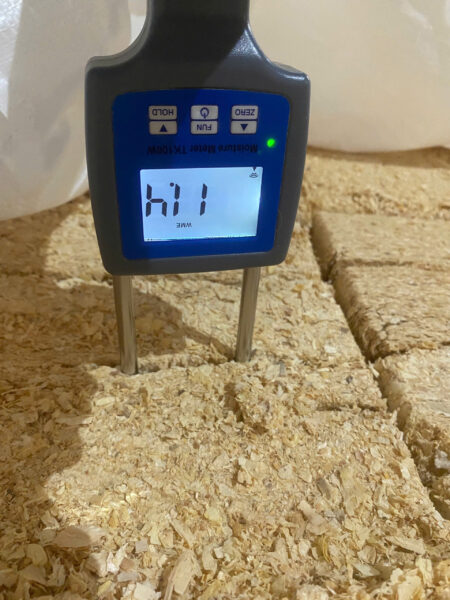
Rotary dryers are commonly used to ensure even and rapid drying, with automated systems monitoring temperature and moisture in real-time. After drying, the wood shavings are cooled using conveyor belts or industrial fans to stabilize their temperature, preparing them for quality control. The quality control phase is rigorous, evaluating factors such as moisture content, size, cleanliness, and uniformity. Laboratories employ moisture meters, particle size analyzers, and microbial testing to ensure the product is free from bacteria or mold, meeting the stringent demands of international markets.

Certifications from organizations like SGS or Intertek are often provided to verify product quality and transparency. Once approved, the wood shavings are packaged in specialized containers such as PP bags, compressed bags, or jumbo bags, with weights ranging from 10 kg to 1 ton. Automated packaging machines ensure the product is tightly packed, minimizing transport space and protecting against moisture or external elements. Each package is clearly labeled with details about the wood’s origin, size, moisture content, and FSC/PEFC certifications, ensuring transparency and compliance with export standards.
4. Transportation, Export, and Benefits of the Wood Shavings Process
Before export, wood shavings undergo a final inspection to ensure compliance with international standards such as ENplus (for wood pellets), ISPM 15 (phytosanitary measures), and requirements for legally sourced wood. Shipments are accompanied by certificates like Phytosanitary, Health, and Fumigation to confirm the absence of pests or harmful microorganisms, meeting the demands of markets like the EU, Japan, South Korea, and the Middle East. The product is transported in containers or specialized trucks designed to protect against moisture and ensure product integrity during transit.
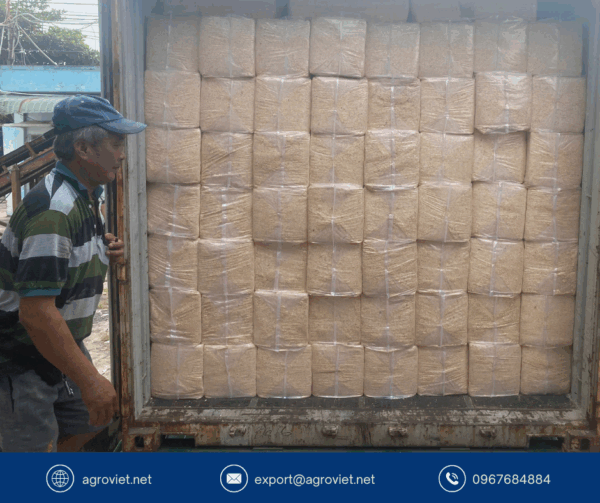
Containers are neatly packed and secured to prevent shifting, with GPS technology used to track shipments and ensure timely delivery. Wood shavings are exported to over 20 countries, contributing to the global promotion of sustainable wood products and delivering significant economic value. The internationally standardized production process offers numerous benefits. In terms of quality, the product is highly consistent, meeting the diverse needs of industries ranging from animal bedding to industrial applications. Environmentally, the use of legally sourced wood and recycled by-products reduces waste, protects natural forests, and aligns with global sustainability goals.
Economically, the optimized production process lowers operational costs, from raw material sourcing to transportation, while producing high-value products that enhance profitability and support the growth of the wood industry. The versatility of wood shavings, applicable in animal bedding, pellet production, and industrial uses, opens up significant growth potential, particularly as demand for sustainable materials rises globally.
Conclusion with AGROVIET’s Commitment
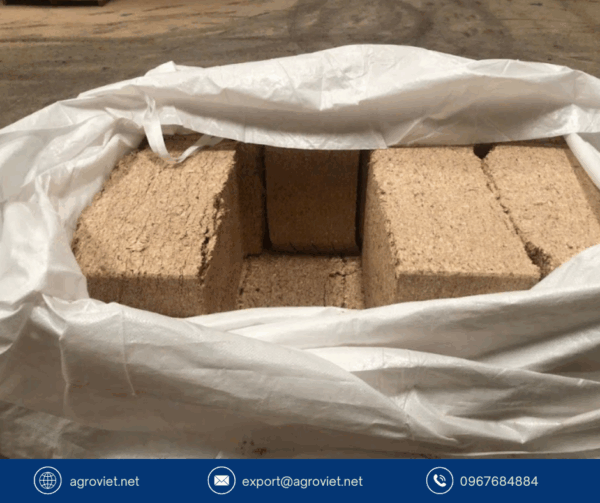
AGROVIET Company Limited, headquartered at 62 Vo Van Tan, Vo Thi Sau Ward, District 3, Ho Chi Minh City, stands as one of Vietnam’s leading wood shavings producers. Established in 2019 with a mission to meet the growing demand for sustainable energy solutions, AGROVIET is committed to innovation, quality, and environmental responsibility. Our wood shavings production process not only delivers high-quality products meeting international standards but also reflects our dedication to protecting forest resources and supporting local communities.
📩 Contact us now for the best offer!
📞 (+84) 967 684 884
🟢 Agroviet – Quality you can trust, solutions your farm needs!
Read more: https://vietnambestwood.com/en/store-and-transport-wood-shavings/
